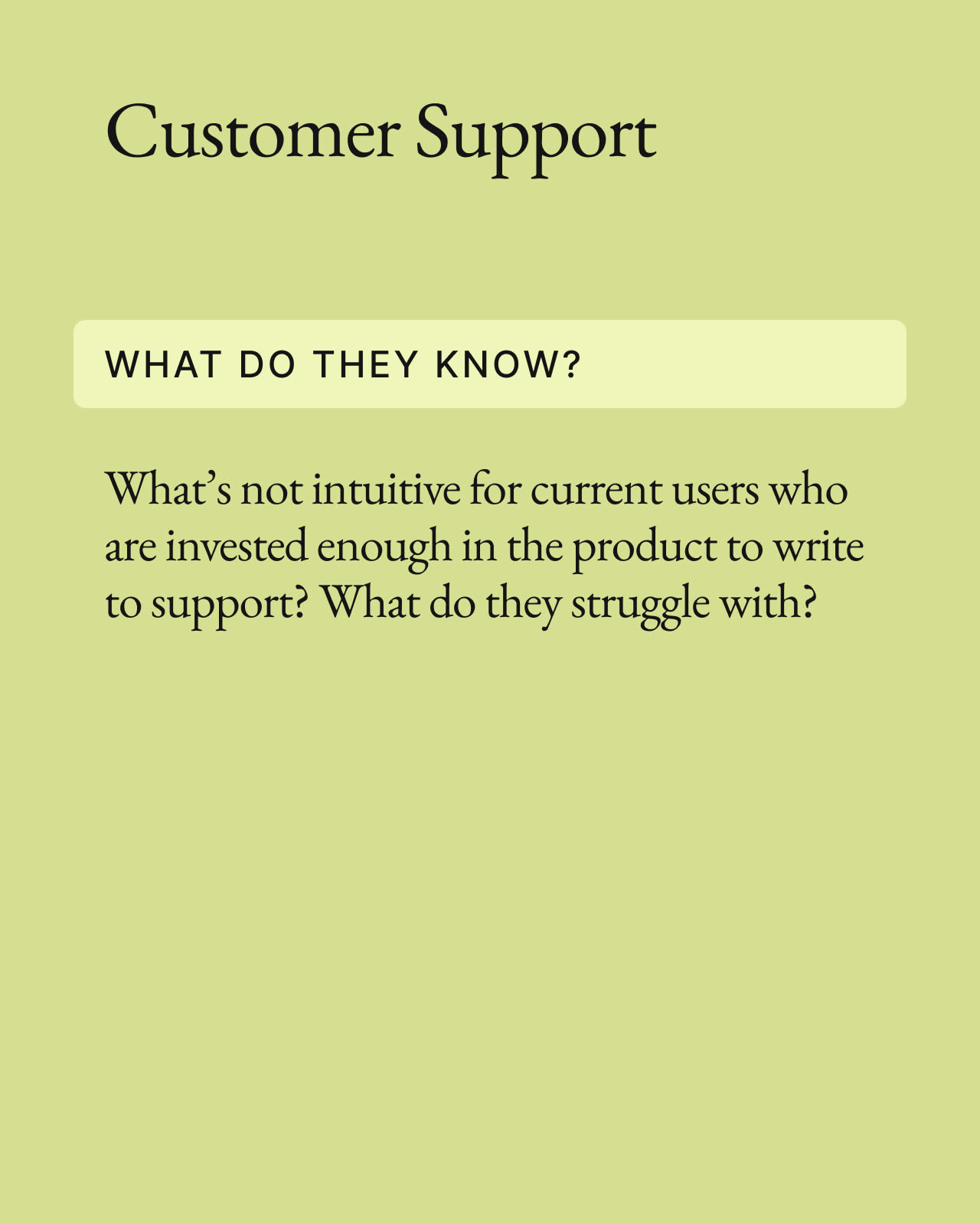From gut feel to facts: a user-centered guide for product people

Open your mind.
Use this guide to figure out the right questions to ask about users and who to go to when you need answers. It’s the fastest way to do proper user-centered work.
Product professionals often feel overwhelmed by the prospect of getting to know their users and stressed when it comes time to triangulate all of the user insights that come from different places—user research, data analysts, management—everyone has an opinion.
But who knows the users? Do you? Do I? It starts to feel more philosophical than practical, so we nod our heads about how important it is to get to know our users and move through our daily tasks, unsure how to do just that.
I’m going to come right out and say it, even if it means losing some friends: “We need to get to know our users better” is the biggest platitude circling the halls of every Product department.
This might sound strange coming from a User Research Lead, given that I spend my days at Lightricks collecting insights about our users and target audience, but hear me out: constantly nudging your product team to “get to know their users” is vague and, therefore, somewhat meaningless.
This command results in half-hearted discovery work (once-a-week user interviews, anyone?). User interviews are definitely a good idea, but this is really beside the point if our end goal is helping our product teams create better user experiences in service of company goals and KPIs.
So what is the point? The point is that to do good product work. We don’t need our product professionals to get to know our users generally. We need them to ask intelligent questions about our users at the right time and know where to go to get the right answers.
While no one at your organization knows everything there is to know about your users, everyone knows something. If product people can distill the right questions about users for every task at hand, whether it’s a simple UX iteration or long-term planning, and ask the right questions of the right people, they’ll be doing user-centered product work.
While the super duper product manager who diligently reads the Customer Success weekly reports and conducts user interviews undoubtedly sharpens their sense of the user base over time and should be encouraged to keep it up—that sixth sense that they’re developing doesn’t fuel user-centered product development enough to create a winning product strategy.
Here are three ways you, as a product professional, can move past the vague directive of “getting to know your users” and actually do user-centered product work.
For every task, write out what you need to know about your users
Whether or not you feel like you have great intuition about your user base, you’ve likely found yourself staring at a PRD or in a planning meeting and not being 100 percent sure what to do next. This is because having a general sense of your users versus knowing the specific things you need to know to make particular product decisions are really and truly different things.
One way to do this is to forget how well you generally know your users, and for each task at hand, write out what you need or want to know about users to make good decisions.
For example, let’s say you’re working on an iteration of an important workflow your team thinks is a core part of the user experience. Your list of questions may look something like:
Where in the current flow is the biggest drop-off? Do different user types drop off at different points in the flow?
To what extent is this flow crucial for our power users?
How do users articulate their challenges with the current flow?
Are there specific UX issues in the flow?
Do users use other tools to compensate for an unmet need in this specific flow? Why?
While writing out your questions may feel like a time investment, it’s the first step in really doing user-centered work.
Think critically about who can answer each of your important questions
I’ll say it once more because it’s worth a repeat: no one at your organization knows everything there is to know about your users, but everyone at your organization knows something about your users.
When making product decisions, you need to go question by question and find the right address. It’s not about going up the ladder and assuming that as you go up, people know the answers to the specific questions at hand.
While every organization is different, here is some information on common teams and individuals and some examples of the type of information they often know about users—or that they can find out for you using their skill sets.








As long as you make the articulation of relevant questions about users a part of your routine, over time, you’ll learn exactly who to go to in order to get the information that you need.
Build your knowledge about users over time with this methodology rather than “get to know your users” in general
The fun part about asking good questions about users and learning where to go to get good answers is that doing this over and over again is the secret to getting to know your users.
Doing other discovery work over time is a very good idea when you can fit it in, but the reality for most product managers is that there is never enough time in the day to do as much user-oriented discovery as they feel they should—and anyway, this general discovery never builds as much nuanced knowledge about users as a more tactical approach.
When all of your product work involves articulating important questions about users and the internal sleuthing to get the right answers, over time, you’re building a nuanced sense of who your users are and how best to serve them.
The best product professionals aren’t the ones who generally know their users better; they’re the ones who know how to ask and answer good questions about users as they work.
As a User Research Lead, I often hear from stakeholders that they want my team to do broad research to get to know our users better. I have to explain that our job isn’t to do the vague work of getting to know our users in general, which is my least favorite product platitude, but rather to answer specific and tactical questions about our user base as needs arise.
This is because there will never be one source of absolute truth about the everchanging, complex nature of human beings—no matter how specific your target audience. Things like personas can be helpful, but they’ll never tell you everything that you need to know for every product decision you need to make.
If you’re looking to serve your users and KPIs, your best bet is to get good at asking the right questions at the right time and knowing who to go to get the right answers.
Subscribe to Outlier
Juicy, inspiring content for product-obsessed people. Brought to you by Dovetail.